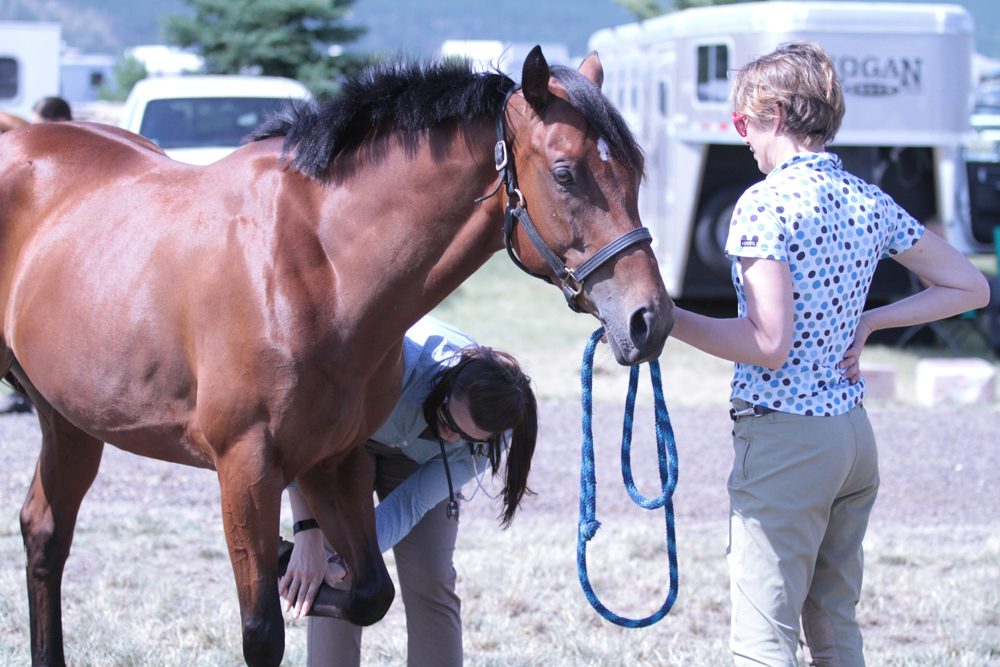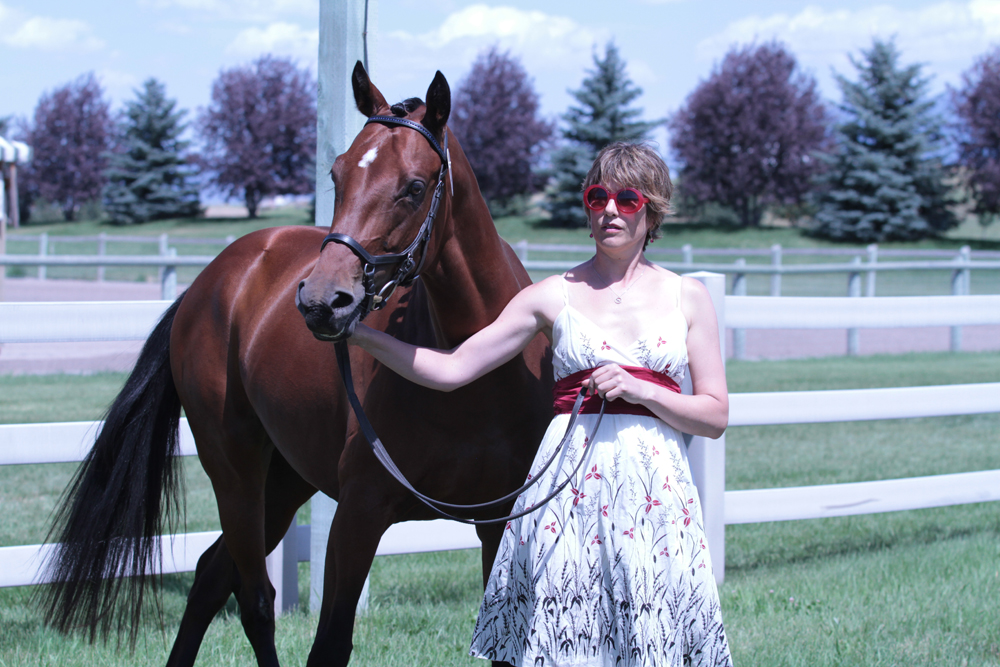Yesterday was the first official day of the novice three-day—though the actual riding part of the competition begins today with dressage—and I’m starting to feel a little more like I know what I’m doing when it comes to the long format.
My mare, Cairo, almost always thinks she knows what she’s doing and, as my trainer Meika Decher puts it, sometimes the trick is having Cairo listen to me instead of the voices in her head.
The day started off with steeplechase schooling with Matt Brown, Pan Am team alternate and winner of the CIC*** last year here at Rebecca Farm. After a warm-up, Matt watched us gallop a little and gave us pointers on our pace and position. Then, one at a time, we headed for the steeplechase fence. The first rider nailed the distance. Matt explained to both of us that the idea was to get to the base of a steeplechase fence, not by using our hands to take back, but by asking the hind end to close the distance.
When it was Cairo and my turn to go, she locked in on the brush-topped steeplechase fence with her usual enthusiasm. For most of the riders Matt kept having to yell “Go on!” to get them on the pace needed for steeplechase—approximately 1,000 meters at 470 mpm. In Cairo’s case, going fast was clearly not an issue, so he gently pointed out that I should make sure I slowed her far enough back from my fences so as not to interfere with her flow over her fences and try to over-control her. “Just let her go,” he said, though he said that might feel hard to do given her strong go-button.

Flying over the steeplechase fence!
He also said the same thing Meika always says to me “Hands down!” And I had one of those moments of clarity when I realized that if some random stranger (well, let me clarify here—a random stranger who rocks it at the three-star level) is telling me the same thing me trainer keeps telling me, then clearly I’m not doing something right. I’ve watched Meika jump Cairo, and I’ve seen where her hands are and how well it works, and even pulled it off for a ride or two, but somehow that hasn’t stuck.
“So,” I said, feeling kind of dorky and asking the question I should have asked the first six times my trainer told me to put my hands down while heading for a fence. “Can you show me what you mean by ‘hands down’?”
ADVERTISEMENT
Matt was super nice and immediately showed me where he wanted my hands on Cairo’s neck and where he wanted them to go as I jumped: He wanted them low on her neck, above her withers on either side of her mane, and I had been trying to bring them way down to her withers and then losing the fight with Cairo when she takes the bit because my reins were too long. I wind up raising my hands and fighting her, and Cairo charges with her chest forward and her head high. I got it right the second time over the steeplechase and it felt miles better with Cairo using her back more effectively and closer to the base of the fence.
After cleaning the sweaty horses up post-steeplechase, Meika’s working student Letty and I took the horses over to the in-barn vet inspection. Cairo flipped the vet some attitude but luckily the woman was incredibly nice about it.

Cairo tolerating the in-barn inspection.
We then put the horses away and raced over to horse inspection 101 with Jennie Brannigan, who was also listed for the Pan Am team and is competing in the CCI* on the Thoroughbred gelding Mixed Blessing. Jennie gave us pointers on how to do the trot-up—no boots on the horse, braids, black bridle (preferably without a flash).
Eventers dress up for the trot up, but she reminded us to concentrate on the horse, especially on the second trot-up after cross-country. She said getting to the barn an hour early and walking the stiffness out of your horse or catching a heel grab and icing it before the inspection can make the difference between being passed or not. You might put away a sound horse the night after cross country, but pull a stiff or ouchy one out the next day.
Letty and I raced back to the barn, braided, cleaned the horses and then swilled ourselves off in water buckets to clean up (it is hot out here in the canola fields of Montana) and put on make-up and pretty dresses.

All dressed up to jog!
ADVERTISEMENT
Trot-ups are an elegant but hectic scene in the holding paddock with all these horses braided and glossy and their riders dressed as if we were heading for a fancy tea party. Letty and I were delighted that Cairo and the horse she rides, Panamint (aka Panda), behaved and passed. We weren’t surprised that they were sound, but Panda and Cairo sometimes get a little wild so good behavior was awesome.

The scene at the trot-up.
One at a time, we entered when our number was called, walked up to the ground jury and presented the horses, trotted away, walked, turned and trotted back. I admit that you feel a bit special when the announcer calls out your name and your horse’s name, pauses and says, “Accepted.” Part of the fun of the long format is how closely it follows the experience of an upper-level competition.

Letty and Panamint waiting for the jog.
We put the horses away and next on the agenda was the tour of roads and tracks and steeplechase. That’s worth a post of its own as I feel like it’s taken a good two days to get my mind wrapped around how it works!

That’s course designer Ian Stark showing us one of the advanced division jumps!
Now I need to get my mind wrapped around my course walk for cross-country and, more pressing, dressage for today. Hopefully I can get Cairo’s mind wrapped around dressage too. Trotting and cantering in 20-meter circles rate very low on Cairo’s list of preferred activities, and she rarely has any qualms about letting me know that!
Camilla Mortensen is an amateur eventer from Eugene, Ore., who’s made the trek to compete in the novice level three-day. She’s sharing her weekend with us with some great blogs! Want to follow along with how she’s doing? Here are the live scores—she’s in the A division of the novice three-day.















